Cities Skylines 2 development nodes progression guide to get the best for your city
Here are the best Cities Skylines 2 development nodes and how to use them
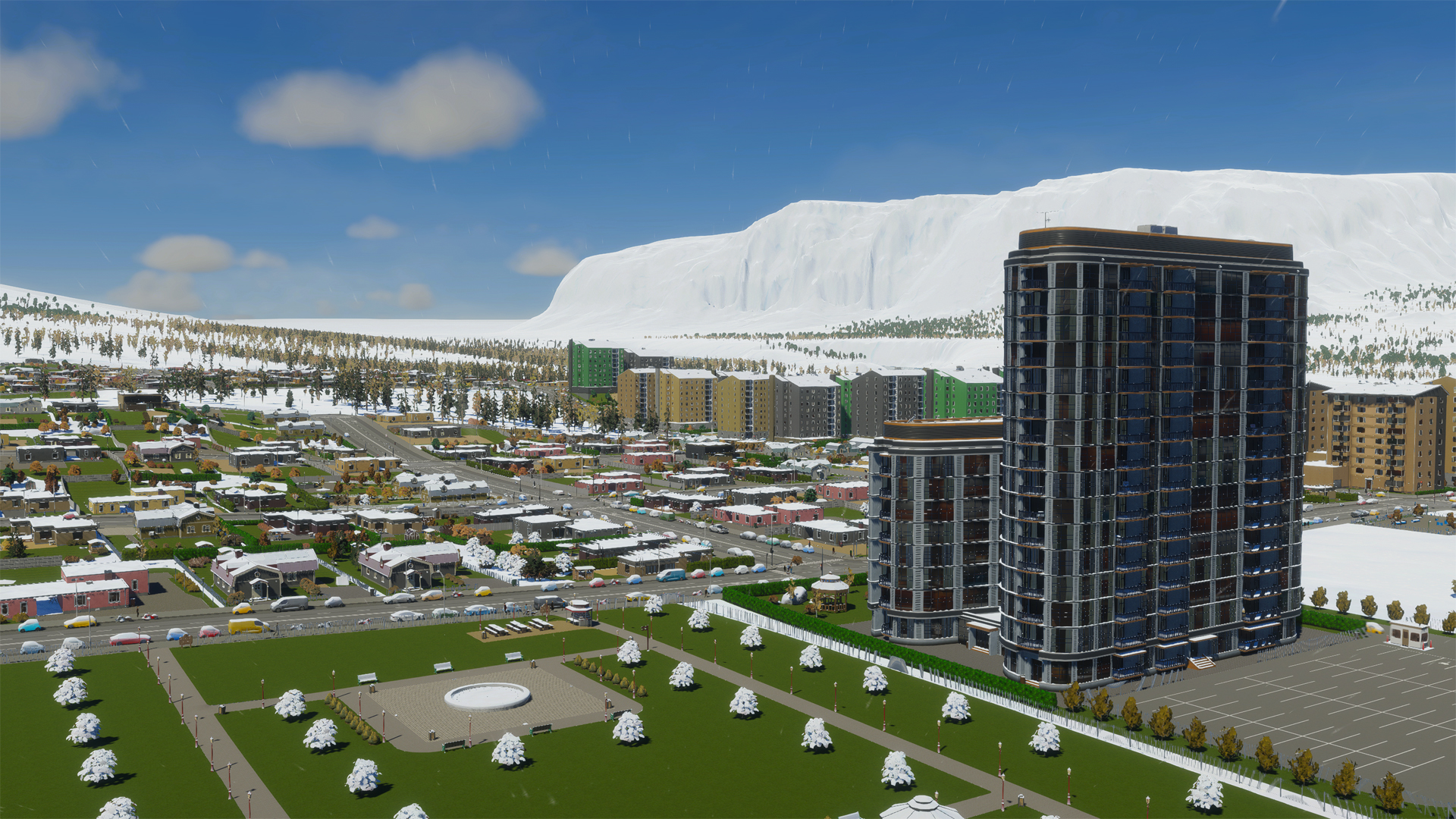
The Cities Skylines 2 development nodes are a big part of progression. As you expand your town and reach new milestones, you can unlock development nodes to receive new buildings and features, such as traffic lights or a police headquarters. With lots of development nodes available, divided over no less than nine categories, it can be a bit difficult to figure out which ones are best.
This Cities Skylines 2 progression guide will show you the best development nodes available. We’ll explain which development upgrades to get in early game, and which ones to save for your future metropolis. And if you need some more general Cities Skylines 2 tips we can help there, as well as advising on how to make Cities Skylines 2 money and how to rotate buildings in Cities Skylines 2.
Cities Skylines 2 progression and development nodes explained
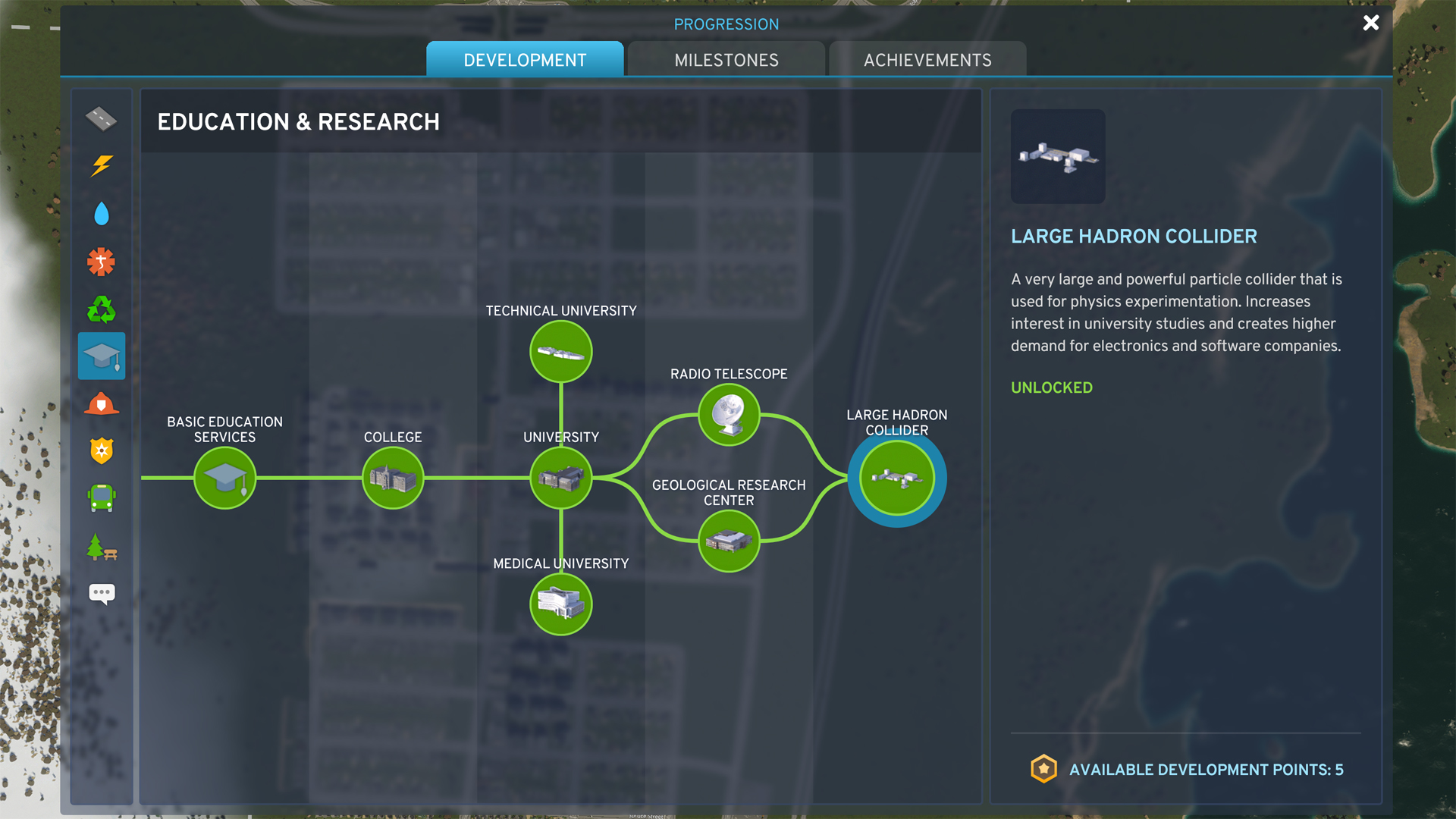
As you grow your new town in Cities Skylines 2, you will reach new milestones. Upon reaching a milestone, you gain a stack of development points, which can be used to unlock development nodes. You’ll find these development nodes in the Cities Skylines 2 progression menu: click on your milestone level in the lower left corner to open it.
As you can see, the development trees are divided into different categories: roads, electricity, garbage management, communications, and more. A development node in the “roads” category typically adds a new type of road, while a development node in the “healthcare” category usually adds a new type of hospital. In this Cities Skylines 2 progression guide, we’ll show you the best development nodes to get in each category.
Cities Skylines 2 Road development nodes

- Advanced road services
- Parking areas
- Underground parking building
Advanced road services is one of the best Cities Skylines 2 development nodes to unlock in early game, as it enables you to regulate traffic with stop signs, traffic lights, sound barriers, and crosswalks. Try to place signs and traffic lights on every major intersection before your town becomes a large city with lots of traffic.
The only other development nodes in the “roads” category you really need before reaching the large city stage, are the parking lots and underground parking spaces. Without a designated parking space, your citizens will park on the road, thus blocking traffic. This is fine for a small town, but you can’t maintain this in a large city. The underground parking is more expensive, but a great way to save space.
Although you should probably get the highway node in late game, the remaining road upgrades aren’t necessary. Placing a pre-made roundabout or intersection may save you some time, but if you want to save development points for other upgrades, you can simply design your own.
Cities Skylines 2 electricity, water, and sewage development nodes
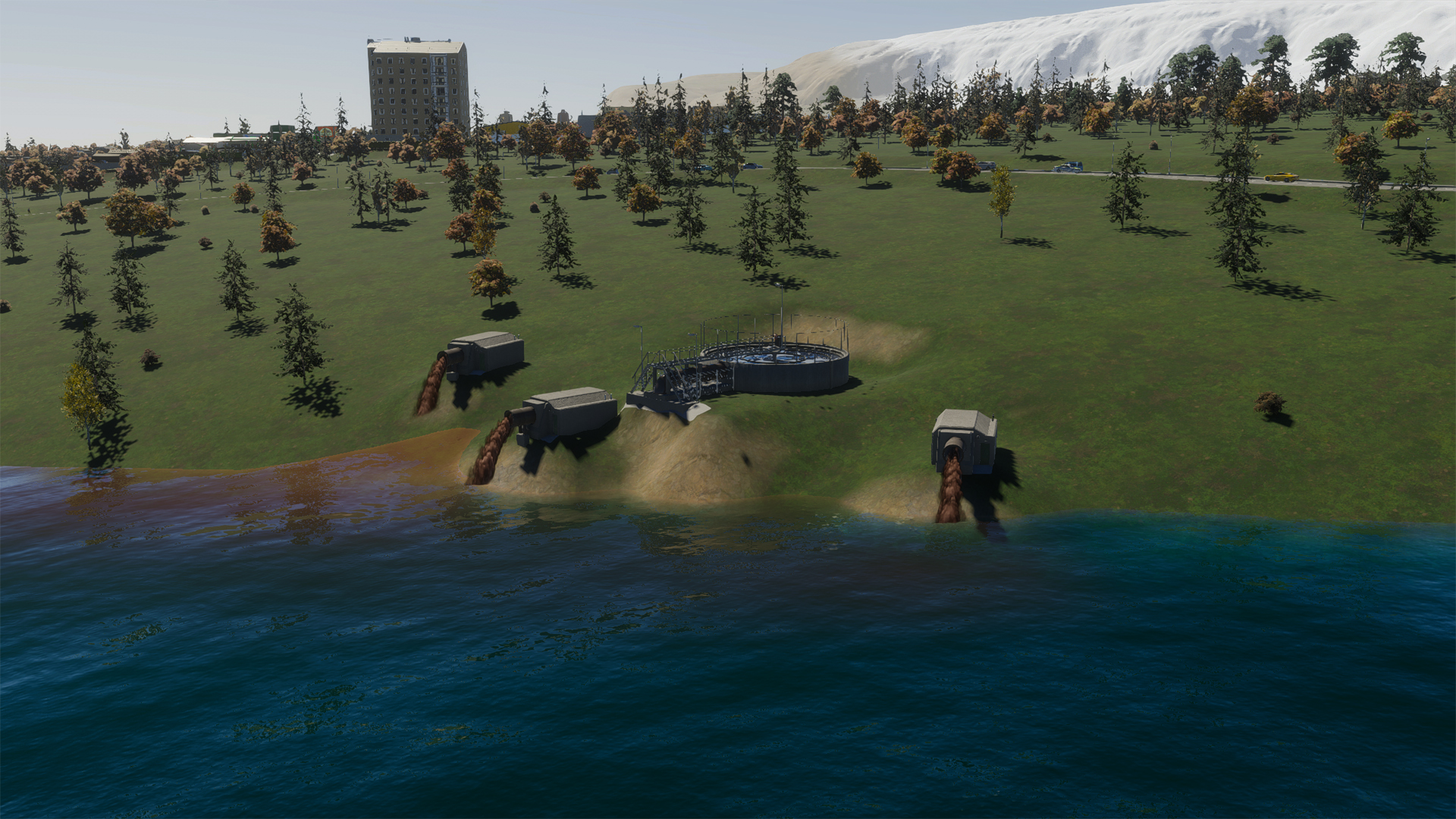
- Emergency battery station
- Solar power plant
- Nuclear power plant
Which electricity development nodes in Cities Skylines 2 are best for you, depends on what you want: a whole lot of energy for relatively little money, or green energy. If you want the first, a coal plant is a good option. If, however, you want to maximise your citizens’ happiness and create as little pollution as possible, start with wind turbines, unlock the emergency battery station, and then choose the solar power plant node. Although the sun doesn’t always shine, the emergency battery will help you store enough energy to get through the winter. The solar plant typically produces more energy than the hydroelectric power plant and is cleaner than the geothermal plant, making it the best “clean energy” option.
If you want to spend an insane amount of money, the nuclear power plant will provide more energy than any of its rivals without polluting the ground or air. However, this development node is locked behind the gas and coal power plants, so it will take some effort to unlock.
As for water upgrades, the improved pumps and water treatment nodes can save you a little bit of money, but that’s about it. You’ll do just fine with a bunch of basic water pumping stations and sewage outlets near a river.
Cities Skylines 2 Healthcare and deathcare development nodes
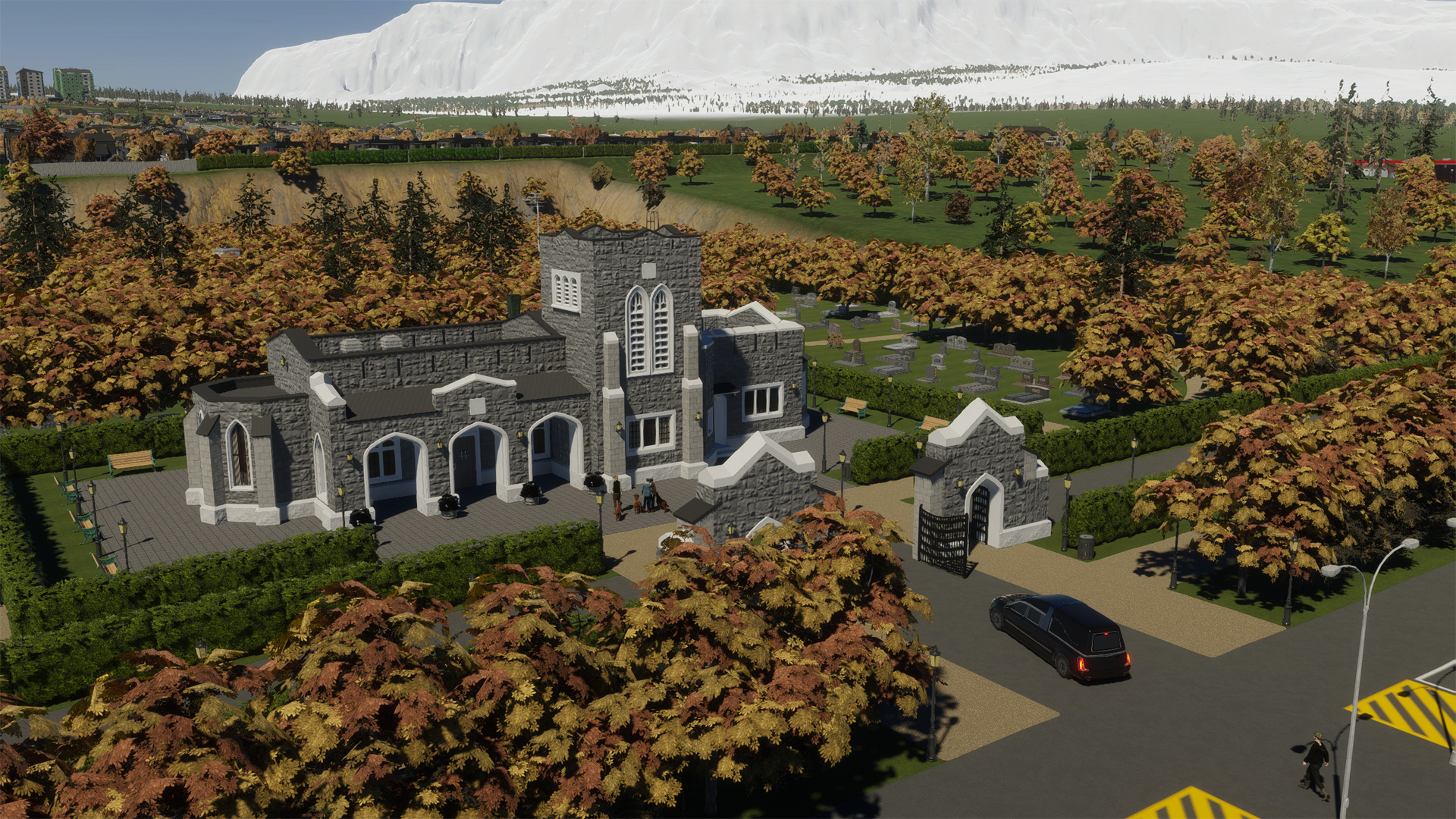
- Hospitals
- Disease control centre
- Health research institute
Try to get the “hospitals” development node as soon as you can afford it. Although hospitals are expensive compared to medical clinics, they have much better range and a ton of potential upgrades. The helipad upgrade is especially great to have if some parts of your town are located on tiny islands or high cliffs.
Both the disease control centre and health research institute are very expensive, and thus only suitable for large cities, but they’re absolutely worth it: the first decreases negative health impact from smog, while the second improves park entertainment and thus happiness. Both hospital types will greatly decrease the chance of infectious diseases spreading.
As for crematoriums; one large town cemetery will last you quite a while, so you don’t need a crematorium unless you’re nearing the metropolis stage – and even then, remember that an additional cemetery may become a tourist attraction, while a crematorium increases pollution.
Cities Skylines 2 Garbage management development nodes
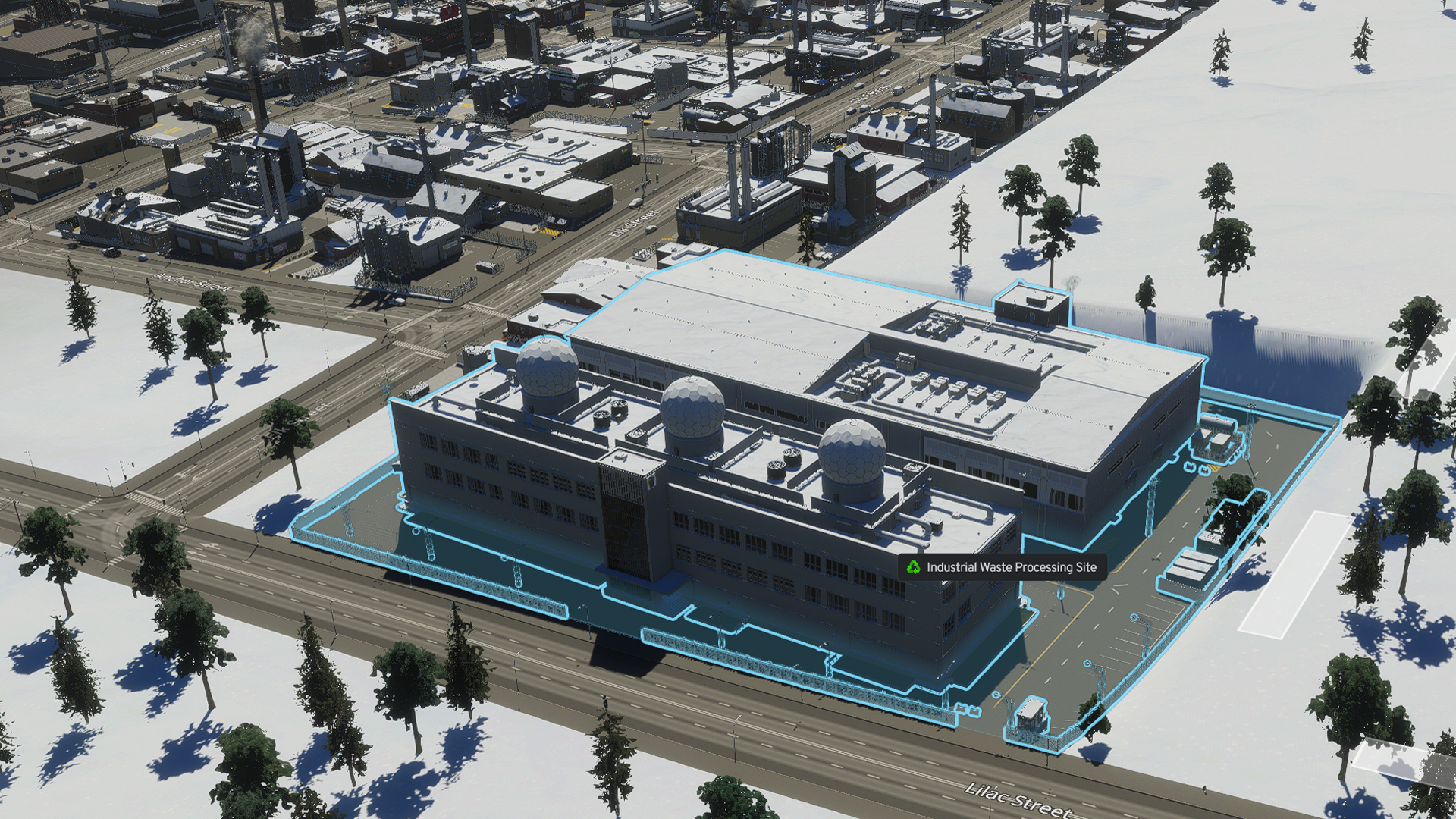
- Recycling centre
- Industrial waste processing site
You don’t have infinite map space in Cities Skylines 2, so it’s best to build one landfill site at the start of the game and unlock the recycling centre development node as quickly as possible. It doesn’t have the same processing capacity as the incineration plant, but you’ll create less pollution. Plus, the recycled materials will generate some income for the city.
The industrial waste processing site is incredibly expensive and incredibly dirty, but it may be worth building if you’ve got an industry-heavy city as it decreases city-wide ground pollution by 15%. Just make sure you place it somewhere downwind, where nobody needs to work or live.
Cities Skylines 2 Education and research development nodes

- Fire houses
- Large emergency shelter
- Early disaster warning system
Just like the hospitals and medical clinics, fire stations provide much better coverage compared to fire houses, so it’s highly recommended to get this Cities Skylines 2 development node early. You don’t need firewatch towers or helicopters unless your city has large patches of forest.
If you play with “natural disasters” enabled, which means that great calamities may strike your city at any time, it’s wise to get large emergency shelters and an early emergency warning system (works city-wide). If you don’t play with natural disasters enabled, you can skip these development nodes.
Cities Skylines 2 Police and administration development nodes
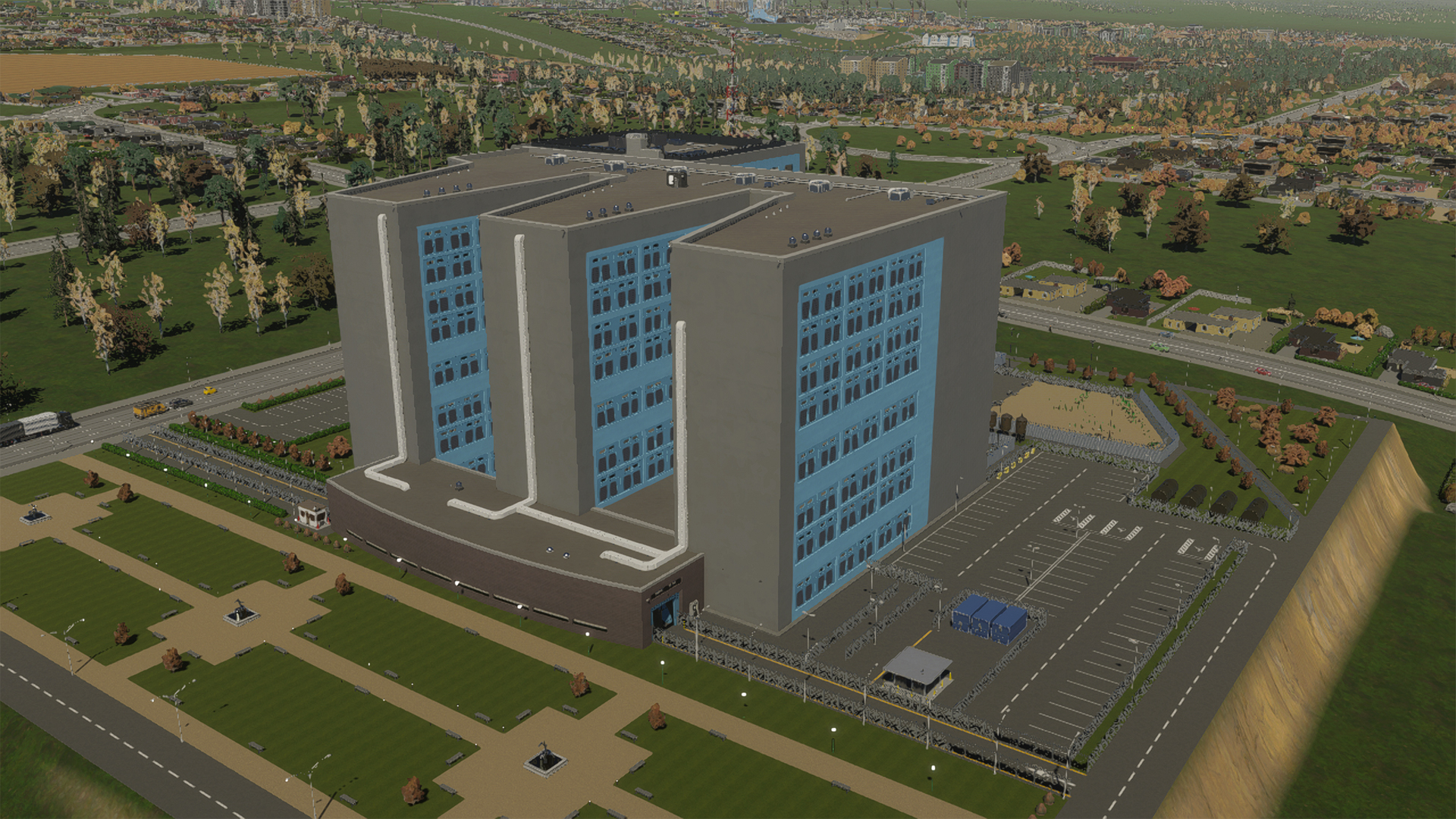
- Police headquarters
- Prison
- Central bank
The only police and administration development node you’ll need in your early Cities Skylines 2 town, is the police headquarters. Instead of building small police stations everywhere, one headquarters is enough to cover a small city. As long as your city is wealthy and has enough police coverage, you won’t need any other development upgrade in this category.
Beware that “jail capacity” isn’t the same as “prison capacity”. You’ll have to build a prison to house convicted criminals, so the “prison” development node is a must. However, you’re unlikely to need this node before you’ve reached the “small city” milestone.
Although building a city hall can be helpful to a large city as it decreases loan interest and import costs, it’s better to save up for the central bank, as this building can improve your export profits too.
Cities Skylines 2 Transportation development nodes

- Tram
- Subway
- Train/water/air
- Space centre
Transportation is possibly the most important Cities Skylines 2 development tree. Once you’ve got a small city, you should start thinking of your outside connections to attract more citizens and export more goods. The cheapest outside connection is the train, so this is usually the best place to start. However, it’s highly recommended to also get the water and air development nodes when you can afford them.
At the end of the transportation development tree, you’ll find the “space centre” node. This building costs almost five million credits plus half a million monthly upkeep, so it’s only suitable for large and wealthy cities. Despite the cost, it’s highly recommended to work towards this development node as it will greatly increase city-wide attractiveness, recreational value, demand for electronics and software, and interest in university education.
As for the best public transport progression node inside your town, the subway is probably the number one option as it’s fast and doesn’t take up much space. However, the tram comes highly recommended too as it transports more passengers than the bus and can use the normal road (after you’ve laid the tracks), which makes it much less costly compared to the subway.
Cities Skylines 2 Parks and recreation development nodes
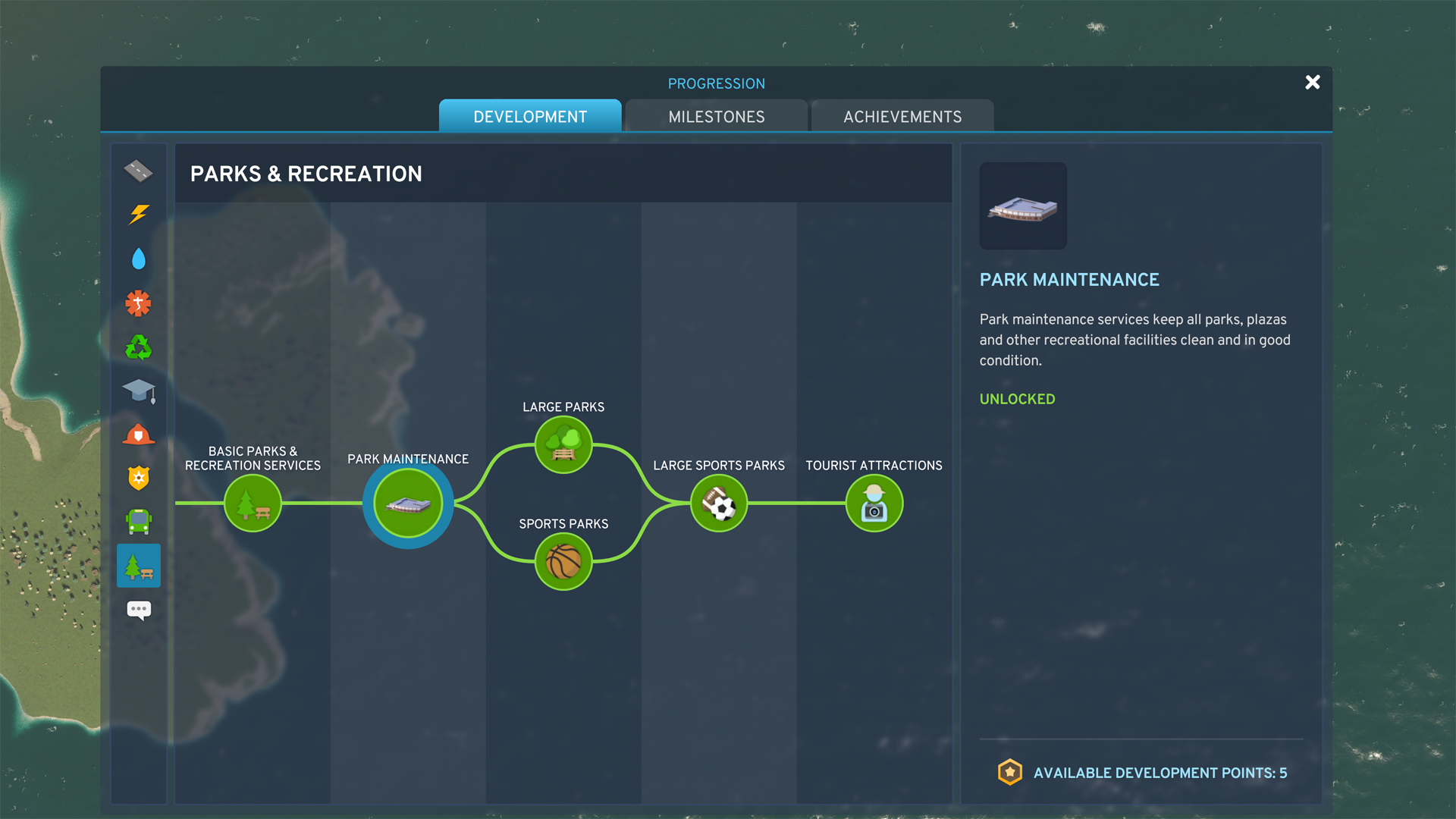
- Park maintenance depot
This one is easy to miss, but you need to unlock the park maintenance depot to maintain the attractiveness of your city parks. If you don’t do maintenance, the parks will gradually lose their charm, and your investment will be for nothing. So when you’re ready to start building parks, always get the park maintenance upgrade!
Every other parks and recreation progression node simply adds more opportunities to improve your city’s attractiveness. While you might want to upgrade them eventually, you can keep your citizens just as happy with the original set of small parks.
Cities Skylines 2 Communications development nodes
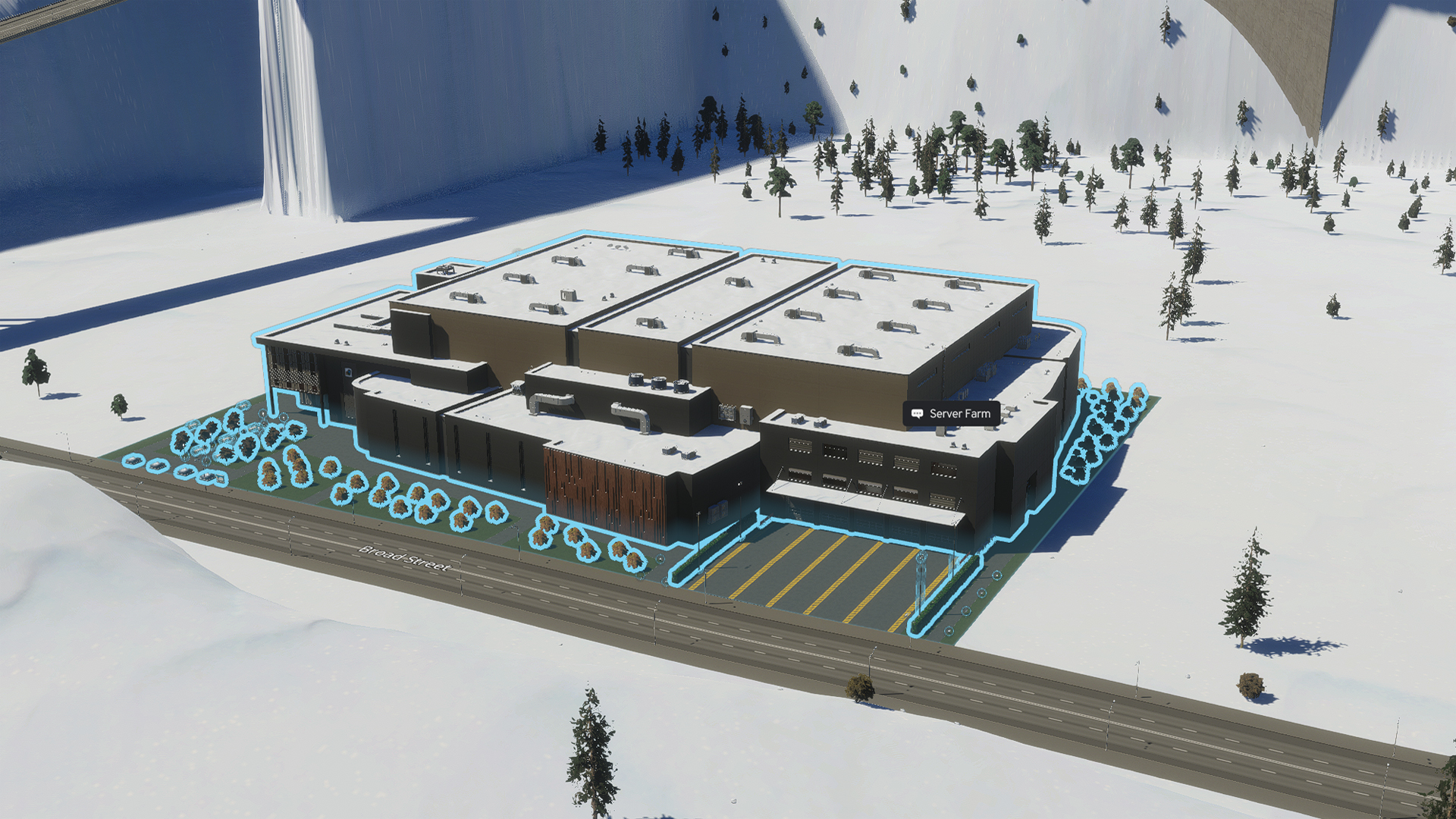
- Server farm
- Satellite uplink
Radio masts are a pain, telecom towers are expensive and don’t have the best network capacity, but server farms are amazing. One or two server farms should be enough to power a small city. Once you’ve established a large, prosperous city, you can unlock the satellite uplink to gain a huge city-wide entertainment, attractiveness, and network capacity boost.
As for the mailing system, you can stick with the basic post offices if you want. The post sorting development node increases processing speed and decreases post-related traffic a bit, but it doesn’t make a huge difference.
That concludes our list of the best Cities Skylines 2 development nodes. Best of luck, mayor!
© GamesRadar+. Not to be reproduced without permission
Weekly digests, tales from the communities you love, and more
I’m a freelance journalist who (surprise!) kind of has a thing for videogames. When I’m not working on guides for GamesRadar, you can probably find me somewhere in Teyvat, Novigrad, or Whiterun. Unless I’m feeling competitive, in which case you should try Erangel. You can also find my words on PCGamesN, Fanbyte, PCGamer, Polygon, Esports Insider, and Game Rant.



